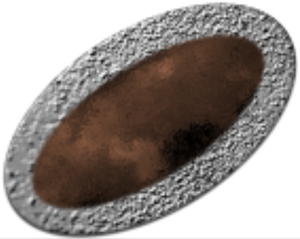Article contents
Exploring slip effects of ferrofluid film flow over a slanted rough surface
Published online by Cambridge University Press: 05 March 2024
Abstract

We examined the influences of slip parameters on the velocity and thermal characteristics of a ferrofluid film of fixed thickness. The flow is generated on a rough and inclined whirling surface that is positioned in an external magnetic (dipole) field. The similarity transformation reduces the model equations (continuity, momentum, energy and concentration), and the solution of the normalized coupled ordinary differential equations is carried out through the finite element process. The influences of slip effects, Brownian motion, thermophoresis and a heat source on the velocity (radial, tangential and axial), gravity (drainage, induced), temperature profile and concentration profile are determined. The tangential flow and temperature are both decreased by an increase in the velocity slip parameter, whereas drainage, induced, radial and axial flows are increased. Enlarging the thermal slip parameter decreases the temperature. Improving slip parameters (velocity and thermal) also improves the concentration profile. Both Nusselt and Sherwood numbers are found to improve on improving the velocity slip parameter, while they decrease on decreasing the thermal slip parameter. The results and insights from this work could be applied to a wide range of medicinal fields, such as targeted medication therapy and delivery, tissue engineering, etc. as well as different industrial processes including coating, lubrication, heat transfer, etc.
- Type
- JFM Papers
- Information
- Copyright
- © The Author(s), 2024. Published by Cambridge University Press
References
- 1
- Cited by



